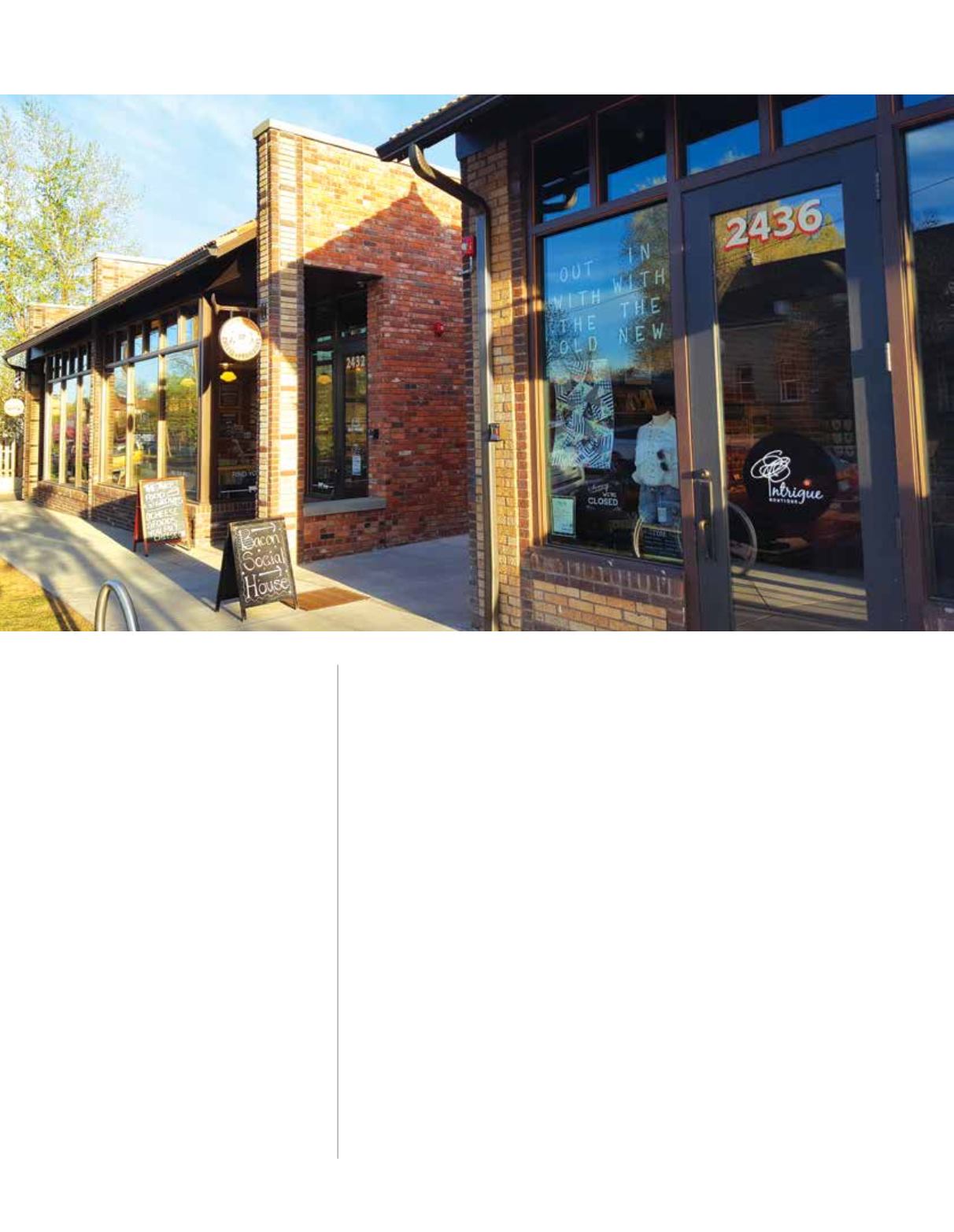

76
/ BUILDING DIALOGUE / JUNE 2017
titled “Older, Smaller, Better,” divided sections of three major cities into grids
and compared a variety of social, economic and environmental factors to deter-
mine the ingredients of successful neighborhoods. The grid squares with a mix
of building ages, developed at a human scale with plenty of historic character,
scored better on nearly every measure, including their ability to attract creative
entrepreneurs, minority-owned businesses, and activity throughout the day.
“Many of the highest-performing grid squares in the study cities are com-
mercial areas with buildings that date to the streetcar era.” The study went on
to specifically recommend that cities “steward the streetcar legacy” in order to
build successful, vibrant and equitable communities.
This is exactly what Jack Pottle and his partner Paul Tamburello of Generator
Development did with the old Alcott Shoe Shop building, which had most re-
cently been used as the Germinal Stage Theater. Pottle had strong memories of
the place, having visited his grandparents’ business as a child. He had a vision
and commitment to honor the qualities of the building and the streetcar dis-
trict while infusing new life into the increasingly popular neighborhood. Gen-
erator Development restored the 4,500-square-foot historic building, and built
a companion one-story building with traditional, transparent storefront spaces
on the adjacent parking lot in order to maintain the human scale and charac-
ter of the original district. Then, they added a little more intensity and square
footage with subtle two-story development behind the shorter buildings, pro-
viding 9,000 sf of new retail, restaurant and workshop space on the block.
Through the Cobbler’s Corner project, Generator Development demonstrated
how to elegantly steward the streetcar legacy, and how to work with the in-
herent character and pattern of a place. Other streetcar districts should look to
this model to ensure that out-of-scale and incompatible new buildings don’t
erase the very fabric that holds our most popular neighborhoods together. As
our streetcar commercial districts continue to experience intense development
activity, projects that work with, not against, the grain will prove better for our
city in the long run.
\\
/ Reviving Denver’s Streetcar Legacy /
PHOTOS:
Historic Denver
OPENING ART:
An authentic taste of Denver’s
streetcar legacy, updated for the
21st century, sits on 44th and Alcott
in what is now known as Cobbler’s
Corner, a case study in how to
bring continuity and character
to infill development.
ABOVE:
An early 20th century example
of streetcar commercial
architecture located at 22nd and
York Street near City Park.
















